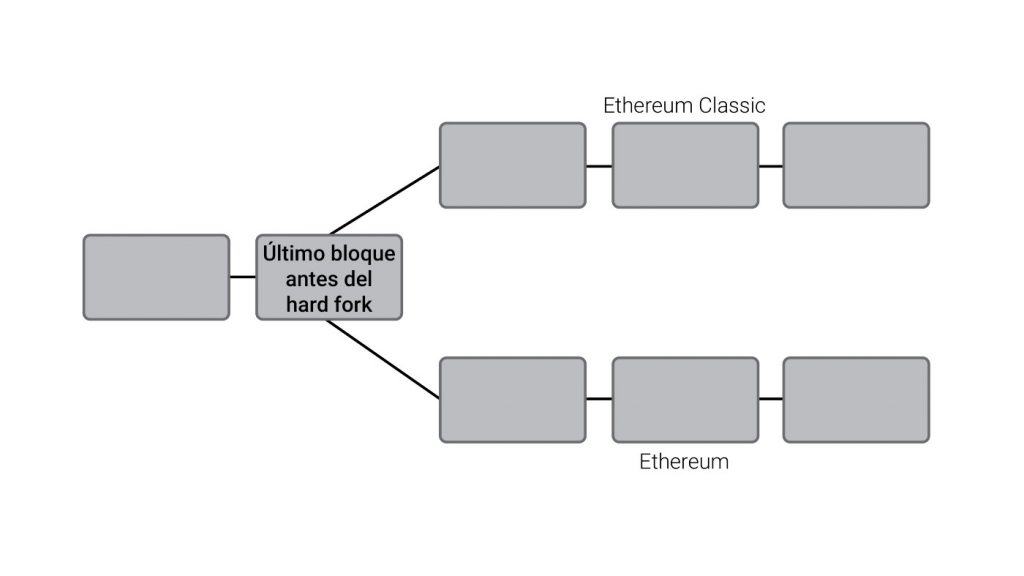
Table of Contents
ToggleTo understand what the difference is between Ethereum and Ethereum Classic we have to go back to June 2016, when a flaw in the Ethereum blockchain code caused the theft of nearly $ 40 million worth of Ether.
Without a doubt, this was one of the most interesting and controversial moments in the short (but intense) history of cryptocurrencies. How to reward all those people who had lost funds due to this incident?
The alarms went off and the entire crypto space was awaiting the measures that would be taken from the Ethereum Community. One of the largest communities in space had to make a decision that would in turn involve immense risk.
So much so that, in the midst of the crisis, the price of Ether fell from $ 20 to less than 13 and the situation became desperate for all holders of this cryptocurrency.
How did the robbery occur?
So that you understand the total context of the birth of Ethereum Classic, I am going to explain a little about the theft.
It all starts with The DAO (Decentralized Autonomous Organization) project, which was implemented as a smart contract on the Ethereum blockchain. The DAO was the largest crowdfunding event in the entire history of cryptocurrencies and served to raise 11.5 million Ether (something like $ 150 million at the time).
But all this hype would be overshadowed in a very short time, as certain developers began to notice certain vulnerabilities in The DAO, which exposed the smart contract to the theft of tokens.
Unfortunately, his warnings were dismissed by much of the community and this would have its consequences.
A person or group of people (their identity is not known to this day) was aware of the error and had begun to exploit it for their own benefit.
Thus, he was withdrawing increasing amounts of cryptocurrencies, without needing the permission of others, until he accumulated the equivalent of 50 million dollars.
This anonymous person then posted an open note on the internet saying that everything she had done was in code, and that if her Ethers were taken away she would take them to court.
Ethereum vs. Ethereum Classic
Due to this serious situation, the Ethereum community had to make a decision and after several weeks of discussion the decision was made to make a hard fork on the Ethereum blockchain.
The choice was not easy and opinions were divided:
On the one hand there were those who supported the fork, saying it would be morally wrong to let the attacker take the funds and keep the money.
On the other hand, the anti forks who argued that “the code is law” and that the DAO should not change under any circumstances, even though the attacker keeps the money.
This hard fork proposal was voted on and approved by 89% of Ether holders and on July 20, 2016, the funds were returned to investors.
The goal was to get everything back to where it started. That is, dismantle the DAO and return the funds.
Due to the hard fork the chain was divided into 2 and a new blockchain was created:
The new blockchain (with the theft recorded and the funds returned) continued to retain the Ethereum name, under the tutelage of Vitalik Buterin, and the original blockchain where the funds were stolen ended up receiving the name Ethereum Classic.

The fork between Ethereum and Ethereum Classic.
Maybe now you understand why in the panel to buy cryptocurrencies in Bitnovo you can choose between buying Ethereum (ETH) or buying Ethereum Classic (ETC).
Similarities and differences between Ethereum and Ethereum Classic
Despite the differences that exist in the bases of both projects, both have the same purpose: to develop a large decentralized blockchain platform. Give users the ability to execute smart contracts without third-party interference, without censorship and without fraud.
Diferencias
– Ethereum Classic has a Proof of Work consensus algorithm
– Ethereum is moving to the Proof of Stake with the upcoming ETH 2.0 updates
– Ethereum Classic will have an issuance cap between 210 and 230 million.
– Ethereum does not have a defined emission cap.
– Ethereum Classic has a market capitalization of $ 600,788,003.
– Ethereum has a market cap of $ 41,801,443,830.
Similarities
– Because they share a large part of the code, the characteristics of their blockchain are identical in terms of the size of the blocks, the average time for creating them, and the rewards that miners receive for their creation.
Problems for Ethereum Classic
Although both chains have similarities, it is more than clear that the great winner in this fight (at least for now) is Ethereum (ETH).
Even more so if we take into account several factors such as that Ethereum Classic lacks the human resources to develop its blockchain.
In addition, the power of mining in the network has been concentrated in the Ethereum blockchain, so the security of the Ethereum Classic network is in danger.
On several occasions it has been damaged by 51% attacks and reports show that between July 31 and August 1, more than 807,000 FTEs have been stolen (something like $ 5.68 million).
Data intelligence firm Blockchain Bitquery said the attacker spent $ 192,000 worth of Bitcoin to obtain the network power to execute the attack.






